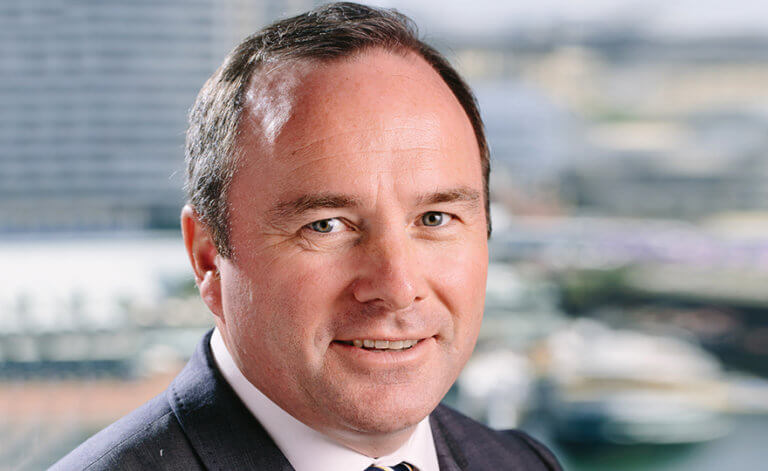Guy Carpenter’s Gallagher sees ‘more stable’ renewals
November 30 2021 by InsuranceAsia News
InsuranceAsia News (IAN) recently caught up with Tony Gallagher, Asia Pacific chief executive at global reinsurance broker Guy Carpenter, to talk about a number of issues including reinsurance growth in the region and how nat cat modelling is changing.
Hong Kong-based Gallagher also discussed the outlook for the 1.1 2022 renewals and how the region’s cat bond and ILS market is developing.
IAN: Where are you seeing growth for P&C reinsurance in Asia Pacific? Have some patterns shifted due to Covid-19?
Gallagher: We are continuing to see growth in Asia Pacific with the traditional products along with new products covering thriving areas such as cyber and health business. The interest in new forms of capital also remains high in the area of cat bonds or structured products, aiming to strengthen balance sheets and mitigate the potential risks using parametric triggers.
IAN: There has been some movement in ILS in the region – in particular in Hong Kong – how do you see this market developing over the next 18 months?
Gallagher: We see the cat bond market in Asia continue to grow with Hong Kong joining Singapore as a hub for ILS in Asia. From the end of Q4 2020 to the end of Q2 2021, cat bond pricing continued to tighten as investor demand for index structures remained strong, due to sustained net capital inflows during the first half of 2021, which, coupled with the high maturity schedule, led to increased market capacity. In Hong Kong we would expect to see increasing number of issuances in 2022 and beyond as the industry looks towards cat bonds as a sustainable form of providing coverage for catastrophe.
IAN: Looking to the 1.1 2022 Asia Pacific P&C renewals – what trends are Guy Carpenter seeing?
Gallagher: We expect the renewal season to be more stable than last year but a focus on programs where the results have historically not been performing well and the nature of the exposure has changed. The risk appetite will remain unchanged and possibly increased demand for more cat with model revisions and also a review of the respective companies’ risk appetite.
The reinsurance markets are looking to grow and we have seen a number of new entrants looking at specific regions or lines of business. Regarding coverage, we are still looking for all risks coverage to ensure that the market has back-to-back coverage and is providing protection rather than named perils coverage.
IAN: There have been some significant flooding events in China this year. Are these expected to see a shift in reinsurance buying in the country?
Gallagher: Flooding has been an issue throughout this year globally including Asia with a number of events including flash flooding. The impact of these events is creating focus on flood and the impact it is having on economic loss and the protections that are required in the future. In China, modelling companies have been working to develop models to help assess the frequency and severity of these events — which will lead to increased coverage. Guy Carpenter has its own flood G-CAT models which we are working with clients to understand the exposure of the escalating catastrophe risks.
IAN: How is the use of data and analytics in reinsurance improving and changing in the region?
Gallagher: Changes in the way we use data is key to help us understand the changing nature of risk. Whilst historical losses are one aspect that we use to consider risk characteristics, we also need to look at future changes, such as changes in construction types and costs, or climate shifts that impact the frequency and severity of events.
When we build G-CAT models for perils such as flood and wind we try to leverage new findings in hazard and vulnerability data to strive that model outputs reflect the latest science, and also our clients’ needs for adequate protection. We also have the ability to consider in more detail the nature of the individual insured risk. The key characteristic of an individual risk, such as location for flooding or construction, allows us a better understanding of the overall portfolio and better able to structure, price and optimise reinsurance.
-
Mapfre Re targets billion-euro Asian GWP milestone: Javier Sánchez Cea
- September 29
Spanish reinsurer places Asia Pacific at the heart of its growth strategy, with life reinsurance in China and India as key drivers, alongside casualty, says chief regional officer.
-
Q&A: Global warming is creating uncertainty in valuation of physical assets
- September 26
Chelsea Jiang, Axa’s chief technical and innovation officer, general insurance for Greater China, shares her views on parametric, how companies can guard against convective storms, and HK’s role in narrowing China’s protection gap.
-
Q&A: Gallagher Re’s Mark Morley on renewals, inflation and pricing
- November 3
The Singapore-based APAC managing director shares his views.
-
Q&A: Swiss Re’s Mark Senkevics
- April 6
Head of P&C underwriting for Asia and ANZ on extreme flooding events in Asia, and how these can be managed going forwards.
-
QBE | Elevating customer experience, humanising claims: QBE Asia’s ‘Solutions in a Box’
Vastly improving turnaround times and personalising service delivery, QBE Asia’s award-winning, end-to-end bundled claims solutions is a game-changer for the insurance industry.
-
Beazley | What does cyber protection look like from day 1 to day 600 and beyond?
Cybersecurity is no longer just an IT concern, but a governance issue that belongs on the boardroom agenda.
-
Sedgwick | Preparing for the next storm
Insurance industry needs to recalibrate, invest in innovation and strengthen systems, talent and data practices.
-
Peak Re | From climate modelling to market opportunity: Forging a new clarity on Southeast Asia’s climate risk
Southeast Asia's protection gap: a crisis of clarity, not just capital

